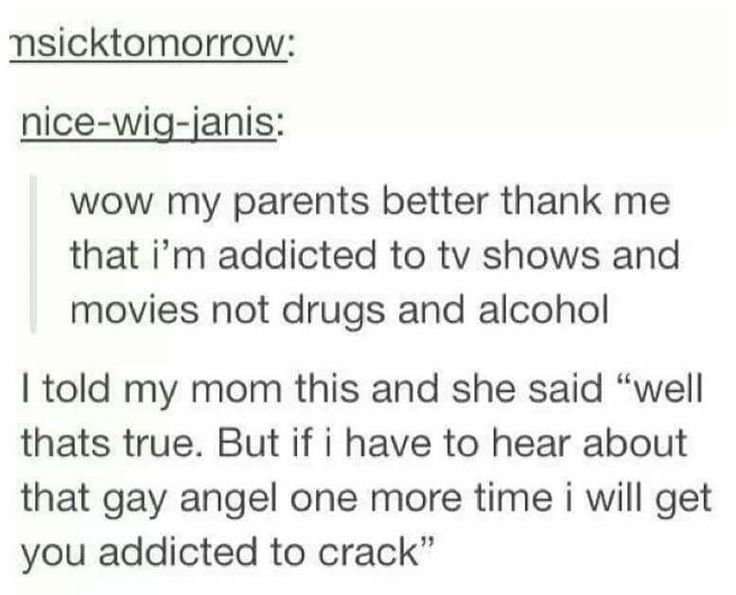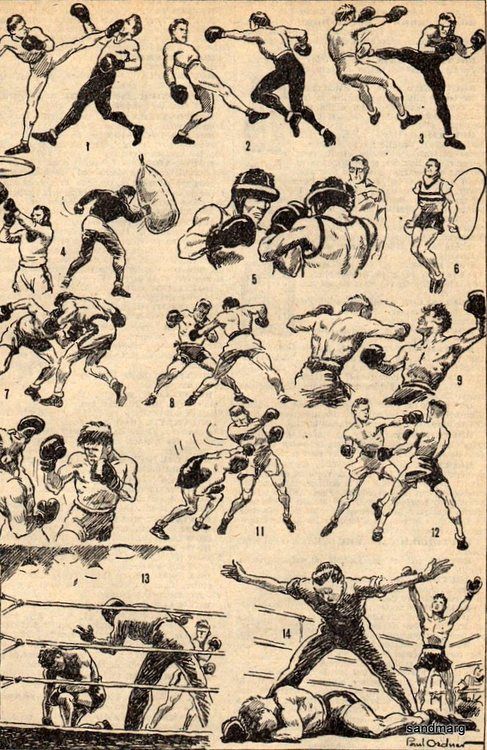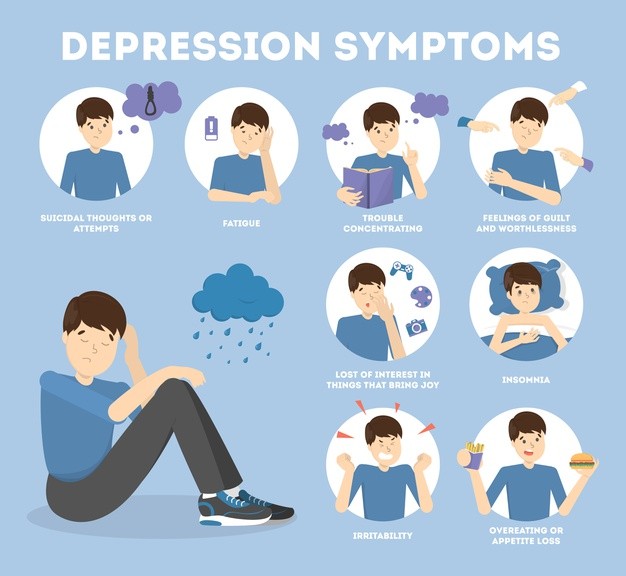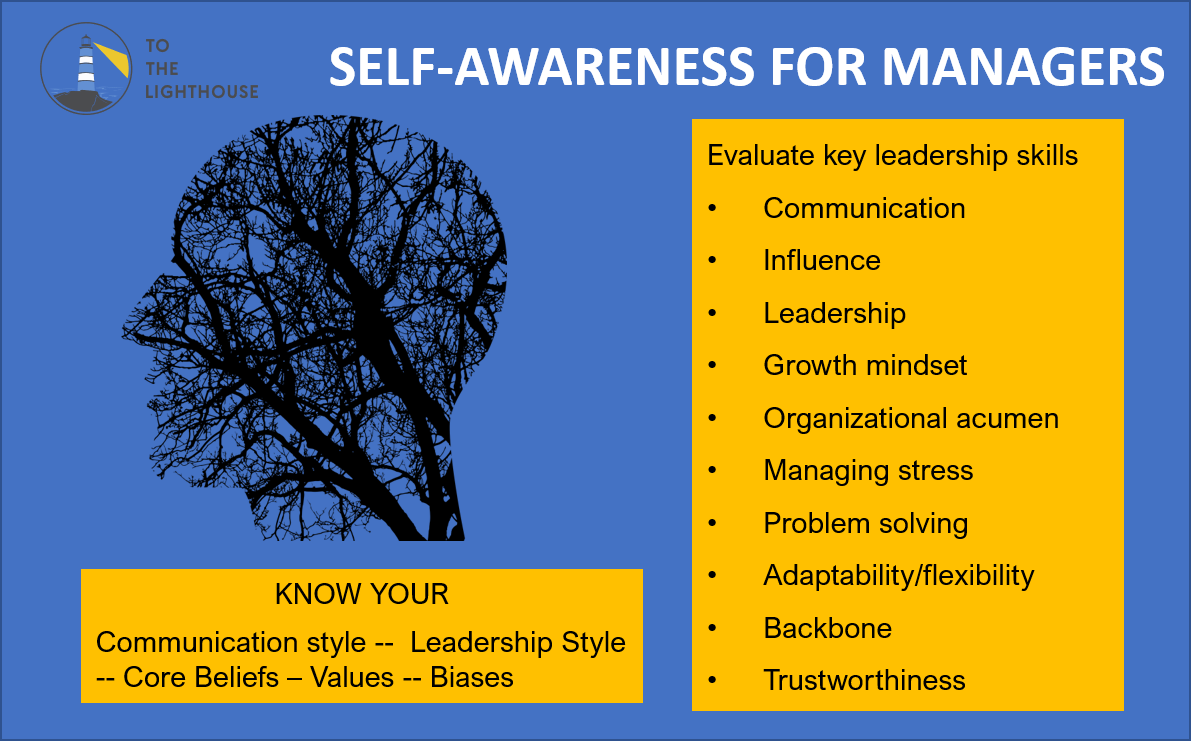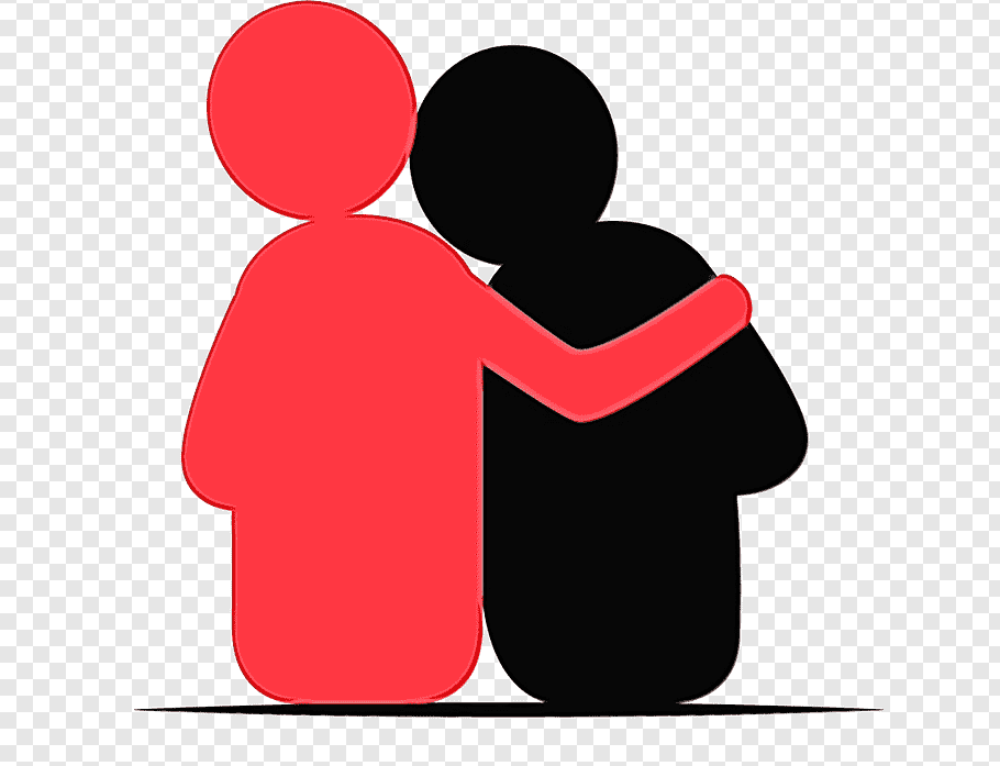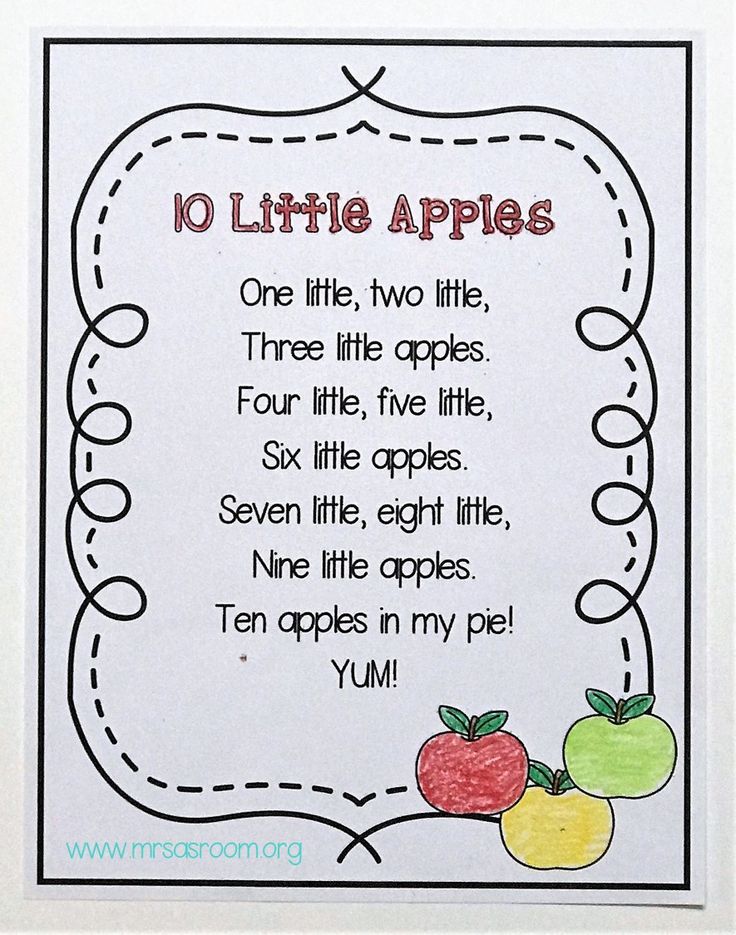You re addicted
How Do You Break an Addiction to a Person?
If you find it hard to end relationships, addressing the underlying causes could help as well as understanding what addiction really is.
Maybe you know a relationship isn’t supporting your physical and emotional health but feel unable to leave it. Or you might feel like you can’t stop thinking about your partner and their needs to the point that you leave your own on the back burner.
In fact, you may think you’re addicted to that person and you may even experience love addiction withdrawal.
What you feel is real and has an explanation. But rather than addiction, some researchers refer to this experience as emotional dependence.
Love addiction or addiction to people aren’t formal mental health diagnoses.
In fact, the term “addiction” is no longer used in general. Instead, medical experts talk about substance use disorder.
But people and relationships aren’t substances, and they don’t have the same effects on you.
Although not everyone agrees, some researchers suggest you could experience symptoms similar to those of someone living with substance use disorder.
For example:
- intense cravings
- significant changes in mood, including feeling fearful or anxious
- neglecting other responsibilities and relationships
- having your life revolve around that person
- staying in the relationship even when experiencing negative consequences
- symptoms of withdrawal when apart from that person
But while emotional dependence can lead you to engage in behaviors that may mirror symptoms of substance use disorder, this isn’t the same as addiction. The causes and processes in place are different.
It isn’t possible to be addicted to a person.
In fact, the Diagnostic and Statistical Manual of Mental Disorders, 5th edition (DSM-5) doesn’t recognize any non-substance addictive behaviors because there’s limited to no evidence for it. That includes relationship and sex addiction.
Researchers also distinguish between substance addiction and “addiction” in relationships because love, unlike substance use, is a desirable experience for most people.
Still, research from 2016 suggests that because romance can stimulate the reward centers of the brain in a similar way to substances, it could lead to certain patterns that mimic what some people call addiction — or, more accurately, compulsive behavior.
Some people also live with a condition called erotomania.
Erotomania is a type of delusion that makes you believe someone is in love with you, even if there’s no evidence to support this belief. Most often, this other person is a celebrity or someone you admire.
If it feels difficult to let someone go even when you know it’s for the best, a few different factors other than addiction might be at play.
Attachment style
According to attachment theory, your attachment style — or the way you bond with others — forms through some of your earliest relationships, such as with your parents or primary caregiver.
While a secure attachment style tends to support balanced relationships, an insecure attachment style can cause more stress.
According to 2019 research, insecure attachment styles — especially anxious and avoidant types — were associated with less satisfaction in relationships.
Other research from 2015 connects anxious attachment with lower levels of trust in romantic relationships.
Understanding your attachment style can help you identify how you expect a relationship to meet your needs.
For example, if you have an anxious attachment style, you might feel like you can’t rely on your partner to consistently meet your needs, which can lead to fear of abandonment.
Fear of abandonment
Fear of abandonment can make it feel like any relationship is better than being alone. And if you feel this way, it can be harder to break off a relationship even when you know it might not be the right choice for you.
While experts believe anxious attachment plays a significant role in abandonment anxiety, there may be more to the story.
You might also fear abandonment if you:
- live with a personality disorder
- were abandoned in the past by a parent or partner
- have a history of trauma or live with post-traumatic stress disorder (PTSD)
Codependency
Some people find viewing their codependency symptoms through the lens of addiction is helpful when communicating their experience with others, even though experts don’t recognize the term as a formal condition.
In relationships, codependency is linked to:
- difficulty with authenticity
- an unclear sense of self
- people-pleasing behaviors
Research from 2018 suggests codependency could stem from early childhood experiences.
One theory is that rigid and unsupportive family environments lead to codependency when you feel that changing yourself to fit a parent’s expectations is the only way to be accepted.
These feelings can carry over into adult relationships, making it harder to maintain your sense of self and needs.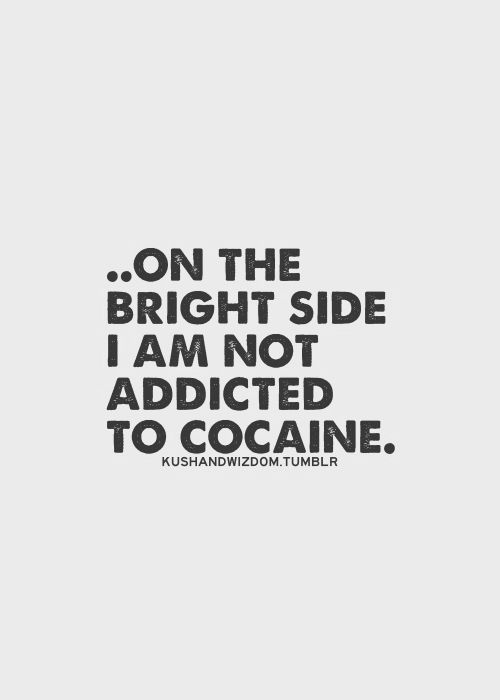
Mental health conditions
Research from 2015 suggests that what you may feel is an addiction to a person could be better explained by mental health conditions such as:
- Personality disorders. Borderline personality disorder, dependent personality disorder, and histrionic personality disorder are connected to anxious attachment styles and sensitivity to rejection.
- Anxiety disorders. If you live with an anxiety disorder, it could feed into unbalanced emotional dependence in a relationship. For example, separation anxiety can cause intense stress at the thought of being apart from a loved one.
- Bipolar disorder. Research from 2019 reports that intense romantic attachment causes symptoms of hypomania similar to hypomania that people with bipolar II disorder experience, suggesting these relationships and bipolar disorder may be activating the same regions of the brain.
Obsessive love vs. OCD
OCD
Sometimes, people refer to love as “obsessive,” which might make it easy to confuse with obsessive-compulsive disorder (OCD).
While emotional dependence can cause intrusive thoughts about the other person, it’s not the same as OCD, a formal mental health condition.
In OCD, obsessions are distressing thoughts you cannot control and might become a source of shame. They also often lead you to engage in compulsive behaviors to relieve the stress they cause you.
If you tend to become overly dependent on people or relationships, breaking them off may sound challenging. It’s natural to feel this way.
Even if that coping mechanism wasn’t supporting your well-being, losing it can take an emotional toll.
This is why it’s so common to re-engage in some relationships even after you’ve promised yourself you’ll never go back.
Learning new ways to manage difficult emotions can help you stay away from old relationship patterns for good.
Try to keep notes (or a journal)
Journaling might provide a few benefits if you’re looking to disconnect from a toxic relationship, including:
- serving as a written reminder of why you’re leaving the relationship when you feel like reconsidering
- helping you reconnect with yourself and establish a clearer vision of your own goals and dreams
- allowing you to identify and process difficult emotions
Consider reconnecting with a hobby or goal
Relationships that consume all of your energy and attention can leave you feeling like you no longer know the real “you.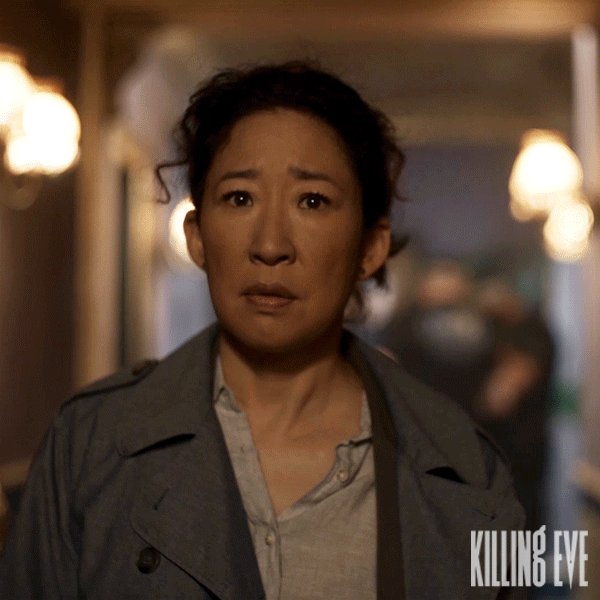 ”
”
If you feel disconnected from yourself, the first step might be exploring potential areas of interest or asking what goals motivate you. When you’ve found a potential answer, consider dedicating time every day to explore that hobby or work toward that goal.
Practicing somatic exercises might help
Overdependence on a partner or relationship can be a maladaptive, or unproductive, strategy for coping with difficult emotions.
Somatic therapy, which helps you tune in to your own physical and emotional responses to stress, could help you reestablish a sense of self and develop emotional regulation skills, according to 2018 research.
While somatic therapy often works best with the support of a trained therapist, you can try these four exercises at home.
Try inner child work
Acknowledging and reconnecting with your inner child could help you overcome emotional dependence in relationships, especially if past trauma has shaped how you approach relationships.
Inner child work focuses on:
- healing childhood trauma and complex PTSD
- addressing and reducing feelings of shame
- developing self-compassion
A trauma-informed therapist can guide you through the process of inner child work, but you can also practice some aspects of it on your own. Here’s how to get started.
Consider a support group
Some people report that talking with others who identify with the concept of love addiction is a significant part of healing from emotional dependence.
If you’re interested in joining a support group, you might be able to find a local group in your community.
Therapy can help
According to 2019 research, certain forms of therapy could allow you to challenge your current relationship patterns by helping you:
- confront cognitive distortions
- improve communication with yourself
- separate fantasy from reality in relationships
- develop a secure attachment style
These forms of therapy include cognitive behavioral therapy (CBT) and psychodynamic therapy.
Working with a therapist may also help you reconnect with yourself if you feel out of touch with your own wants and needs.
Although addiction to a person isn’t a formal medical diagnosis, it’s possible to fall into a pattern of emotional dependence on someone.
Breaking out of this relationship pattern can be difficult and often means getting to the root of what’s causing your emotional dependence. Emotional regulation strategies, patience, and self-compassion can help you through this process.
Biology of Addiction | NIH News in Health
October 2015
Print this issue
Drugs and Alcohol Can Hijack Your Brain
En españolSend us your comments
People with addiction lose control over their actions. They crave and seek out drugs, alcohol, or other substances no matter what the cost—even at the risk of damaging friendships, hurting family, or losing jobs. What is it about addiction that makes people behave in such destructive ways? And why is it so hard to quit?
What is it about addiction that makes people behave in such destructive ways? And why is it so hard to quit?
NIH-funded scientists are working to learn more about the biology of addiction. They’ve shown that addiction is a long-lasting and complex brain disease, and that current treatments can help people control their addictions. But even for those who’ve successfully quit, there’s always a risk of the addiction returning, which is called relapse.
The biological basis of addiction helps to explain why people need much more than good intentions or willpower to break their addictions.
“A common misperception is that addiction is a choice or moral problem, and all you have to do is stop. But nothing could be further from the truth,” says Dr. George Koob, director of NIH’s National Institute on Alcohol Abuse and Alcoholism. “The brain actually changes with addiction, and it takes a good deal of work to get it back to its normal state. The more drugs or alcohol you’ve taken, the more disruptive it is to the brain. ”
”
Researchers have found that much of addiction’s power lies in its ability to hijack and even destroy key brain regions that are meant to help us survive.
A healthy brain rewards healthy behaviors—like exercising, eating, or bonding with loved ones. It does this by switching on brain circuits that make you feel wonderful, which then motivates you to repeat those behaviors. In contrast, when you’re in danger, a healthy brain pushes your body to react quickly with fear or alarm, so you’ll get out of harm’s way. If you’re tempted by something questionable—like eating ice cream before dinner or buying things you can’t afford—the front regions of your brain can help you decide if the consequences are worth the actions.
But when you’re becoming addicted to a substance, that normal hardwiring of helpful brain processes can begin to work against you. Drugs or alcohol can hijack the pleasure/reward circuits in your brain and hook you into wanting more and more. Addiction can also send your emotional danger-sensing circuits into overdrive, making you feel anxious and stressed when you’re not using the drugs or alcohol. At this stage, people often use drugs or alcohol to keep from feeling bad rather than for their pleasurable effects.
At this stage, people often use drugs or alcohol to keep from feeling bad rather than for their pleasurable effects.
To add to that, repeated use of drugs can damage the essential decision-making center at the front of the brain. This area, known as the prefrontal cortex, is the very region that should help you recognize the harms of using addictive substances.
“Brain imaging studies of people addicted to drugs or alcohol show decreased activity in this frontal cortex,” says Dr. Nora Volkow, director of NIH’s National Institute on Drug Abuse. “When the frontal cortex isn’t working properly, people can’t make the decision to stop taking the drug—even if they realize the price of taking that drug may be extremely high, and they might lose custody of their children or end up in jail. Nonetheless, they take it.”
Scientists don’t yet understand why some people become addicted while others don’t. Addiction tends to run in families, and certain types of genesStretches of DNA, a substance you inherit from your parents, that define characteristics such as your risk for certain disorders, such as addiction. have been linked to different forms of addiction. But not all members of an affected family are necessarily prone to addiction. “As with heart disease or diabetes, there’s no one gene that makes you vulnerable,” Koob says.
have been linked to different forms of addiction. But not all members of an affected family are necessarily prone to addiction. “As with heart disease or diabetes, there’s no one gene that makes you vulnerable,” Koob says.
Other factors can also raise your chances of addiction. “Growing up with an alcoholic; being abused as a child; being exposed to extraordinary stress—all of these social factors can contribute to the risk for alcohol addiction or drug abuse,” Koob says. “And with drugs or underage drinking, the earlier you start, the greater the likelihood of having alcohol use disorder or addiction later in life.”
Teens are especially vulnerable to possible addiction because their brains are not yet fully developed—particularly the frontal regions that help with impulse control and assessing risk. Pleasure circuits in adolescent brains also operate in overdrive, making drug and alcohol use even more rewarding and enticing.
NIH is launching a new nationwide study to learn more about how teen brains are altered by alcohol, tobacco, marijuana, and other drugs.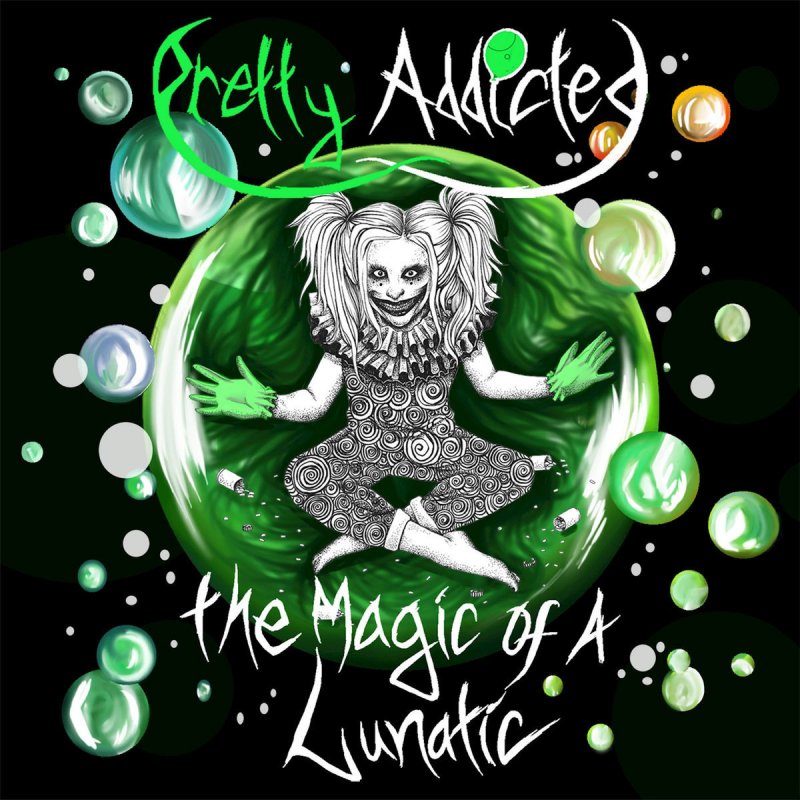 Researchers will use brain scans and other tools to assess more than 10,000 youth over a 10-year span. The study will track the links between substance use and brain changes, academic achievement, IQ, thinking skills, and mental health over time.
Researchers will use brain scans and other tools to assess more than 10,000 youth over a 10-year span. The study will track the links between substance use and brain changes, academic achievement, IQ, thinking skills, and mental health over time.
Although there’s much still to learn, we do know that prevention is critical to reducing the harms of addiction. “Childhood and adolescence are times when parents can get involved and teach their kids about a healthy lifestyle and activities that can protect against the use of drugs,” Volkow says. “Physical activity is important, as well as getting engaged in work, science projects, art, or social networks that do not promote use of drugs.”
To treat addiction, scientists have identified several medications and behavioral therapies—especially when used in combination—that can help people stop using specific substances and prevent relapse. Unfortunately, no medications are yet available to treat addiction to stimulants such as cocaine or methamphetamine, but behavioral therapies can help.
“Treatment depends to a large extent on the severity of addiction and the individual person,” Koob adds. “Some people can stop cigarette smoking and alcohol use disorders on their own. More severe cases might require months or even years of treatment and follow-up, with real efforts by the individual and usually complete abstinence from the substance afterward.”
NIH-funded researchers are also evaluating experimental therapies that might enhance the effectiveness of established treatments. Mindfulness meditation and magnetic stimulation of the brain are being assessed for their ability to strengthen brain circuits that have been harmed by addiction. Scientists are also examining the potential of vaccines against nicotine, cocaine, and other drugs, which might prevent the drug from entering the brain.
“Addiction is a devastating disease, with a relatively high death rate and serious social consequences,” Volkow says. “We’re exploring multiple strategies so individuals will eventually have more treatment options, which will increase their chances of success to help them stop taking the drug. ”
”
To find publicly funded addiction treatment centers in your state, call 1-800-622-HELP, or visit https://findtreatment.samhsa.gov/.
How to determine dependent relationships
05.05.2020
Love is a wonderful feeling, but sometimes people confuse love with neurotic addiction.
All people, as you know, are constantly in social relationships. We enter into these relationships all the time: when we communicate with our family, when we enter into friendships, when we contact other people in transport or in the store, when we are in a working relationship, and of course, when we find a mate.
Dependent relationship is a special state of mind when the emotions of one person are so strongly connected with the behavior of another that he can no longer control himself, his feelings and behavior. Absolutely everything: dreams, desires, goals, the meaning of life, is connected with the object of unhealthy “love”. The latter acts as a manipulator and either consciously or subconsciously develops in the "victim" dependence on himself.
The latter acts as a manipulator and either consciously or subconsciously develops in the "victim" dependence on himself.
The reason why a person is inclined to enter into a dependent relationship may lie in low self-esteem, lack of concentration on one's own "I", ideas about unconditional love, or in the usual example of close relationships.
In psychology there is such a thing as a manipulatory triangle. It consists of Persecutor, Victim and Rescuer . Its creator, oddly enough, is always Victim .
This is a person who has shifted the responsibility for his life to others, and sincerely believes that the Persecutor is the cause of all her failures, the root of all evil in her life. Usually in such relationships there is also the so-called Rescuer .
This game is destructive, but there is a certain "benefit" for all participants in it . Otherwise, they would not have participated in it. Remember that you can always voluntarily leave the wrong relationship.
Remember that you can always voluntarily leave the wrong relationship.
Basically, it is the behavior of the family of origin that influences what kind of relationships we choose as adults. For example, if in the parental family it was “accepted” to speak in raised tones, assault or elements of psychological violence, then the child in this family forms the idea that true love is impossible without such manifestations. Finding the right "partner", who most likely received a similar experience of family relationships in childhood, one enters into a kind of psychological game, constantly switching roles between the Victim, the Persecutor and the Rescuer. At the same time, it is difficult for both of them in these relations, but they cannot refuse them for a number of reasons: they do not know how to do it differently, or they get a kind of pleasure from being in such a relationship. At the same time, the main difficulty is that it is quite difficult to understand that you are in a dependent relationship.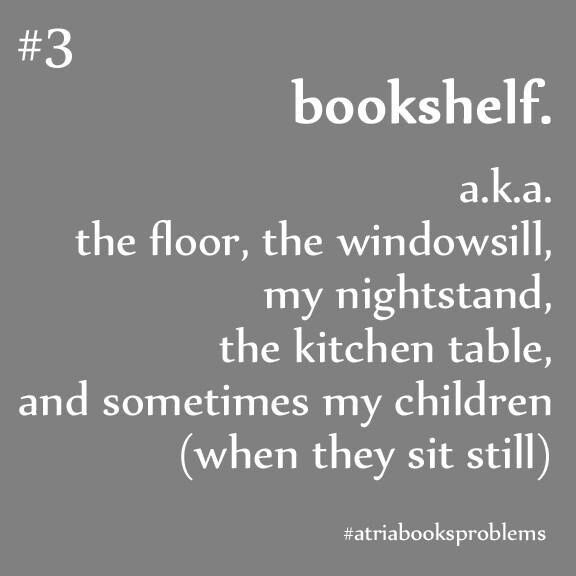 At the same time, a certain proportion of dependence is manifested in almost any relationship, especially in their first stages of formation.
At the same time, a certain proportion of dependence is manifested in almost any relationship, especially in their first stages of formation.
By what signs can we understand that this is precisely a dependent relationship?
- Confused Liability
In a healthy relationship, each participant is primarily responsible for his own condition and satisfaction of his needs, without trying to take on more or shift responsibility to another. Everyone is primarily responsible for himself.
Responsibility is confused in dependent relationships. We want someone to take responsibility for our security, material well-being and happiness. Or they themselves tend to take excessive responsibility for another. In some respects this manifests itself in the distribution of responsibility. For example, a woman expects a man to financially provide and support her, and for this she will be responsible for the house, life and children - this is a typical example of confused responsibility, albeit so common that it is almost a variant of the norm.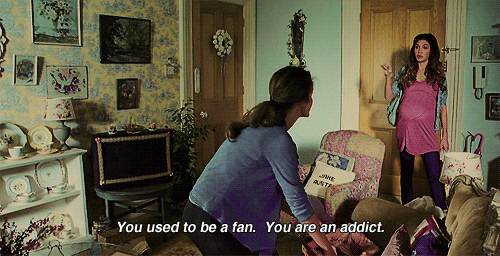 In more severe cases, we shift responsibility for all aspects of our well-being to a partner, or we ourselves take responsibility for saving another. Or, which is also often found, both at the same time. For example, a woman can save her alcoholic husband for years, suffering in this relationship, but hoping that sooner or later her husband will stop drinking and take responsibility for her and the family.
In more severe cases, we shift responsibility for all aspects of our well-being to a partner, or we ourselves take responsibility for saving another. Or, which is also often found, both at the same time. For example, a woman can save her alcoholic husband for years, suffering in this relationship, but hoping that sooner or later her husband will stop drinking and take responsibility for her and the family.
- Blurred borders
In healthy relationships, we are sensitive to our partner's psychological and physical boundaries and are able to defend our boundaries. We feel in time when our actions or words cross the boundaries of what is acceptable for another person. At the same time, we ourselves are well aware of our boundaries and are able to say “no” at the moment when we do not like what the other person does or says. This principle works the same in all areas.
Boundaries are blurred in dependent relationships. We lose the ability to understand where my territory ends and another person's territory begins. A confluence is formed in which we often follow one of two scenarios: we either sacrifice our needs and autonomy and lose the ability to say no, in which case our boundaries are systematically violated; or we ourselves, without encountering resistance, increasingly violate the boundaries of another person and deprive him of the right to independence.
We lose the ability to understand where my territory ends and another person's territory begins. A confluence is formed in which we often follow one of two scenarios: we either sacrifice our needs and autonomy and lose the ability to say no, in which case our boundaries are systematically violated; or we ourselves, without encountering resistance, increasingly violate the boundaries of another person and deprive him of the right to independence.
- Role hierarchy
At first, such a game can be quite pleasant and exciting
In healthy relationships, everything is very simple - they are built on equal terms, from the position of "adult - adult". Most of the time, the participants in such relationships manage to respect their partner, to reckon with his opinion. In such relationships, we always negotiate with each other as two adult independent people. We are forced to seek a compromise, although this is not always pleasant.
In dependent relationships, child-parental roles are included in us - one of the partners takes the role of a defenseless and weak child, the second becomes a strong, guardian adult. At first, such a game can be quite pleasant and exciting - the dominant partner feels his power and strength, the subordinate feels cozy security and no need to decide anything, because the boss will take care of everything. But if such a distribution of roles becomes fixed and becomes chronic, then a rigid hierarchy of dominance-submission is built in the relationship. In such conditions, an adult turns into an aggressor, and a child becomes a victim. A strong hand very quickly begins not to protect, but to cripple, because the lower partner has lost the ability to defend its boundaries, and the upper one, without meeting resistance, can no longer cope with uncontrolled aggression. This is how domestic physical violence develops in family relationships and psychological violence in friendly and business relationships.
- Prohibition on awareness and expression of feelings
In a healthy relationship, feelings are legalized, partners can freely talk to each other about their emotional reactions. At the same time, all feelings are legalized - both positive and negative. Partners are able to directly express annoyance, resentment, jealousy and other emotions to each other at the moment when they experience them, without excessively suppressing or ignoring their reactions. With this approach, negative emotions do not stagnate, but circulate freely in a couple and heal relationships: based on their emotional reactions and the reactions of the other, partners build boundaries and learn to negotiate.
Emotions are suppressed in dependent relationships. Talking about your true reactions is forbidden or unsafe. An honest conversation about feelings and experiences is perceived as impossible or unacceptable. Therefore, from time to time, uncontrolled emotional outbursts occur - quarrels, scandals, episodes of violence, etc. However, they do not lead to a real resolution of emotional tension, but only aggravate the situation, since feelings of shame and guilt are added to the accumulated negative experiences, which, in turn, are also suppressed and further poison the relationship.
However, they do not lead to a real resolution of emotional tension, but only aggravate the situation, since feelings of shame and guilt are added to the accumulated negative experiences, which, in turn, are also suppressed and further poison the relationship.
- Distorted "I"
In dependent relationships, we are seen as weak, unattractive, incapable of anything - and as a result, if such relationships continue for a long enough time, we ourselves begin to perceive ourselves in this way, and this is how we become in reality.
In healthy relationships, we get enough support, attention, acceptance. As a result, we are able to notice and accept those qualities and resources that another person sees in us, and they begin to manifest themselves in reality and life.
- Bad internal condition
In healthy relationships, our condition is good most of the time. For a partner, we experience mostly positive emotions - love, gratitude, tenderness, respect, etc. However, this does not mean at all that we do not get upset at all, or do not quarrel with a partner. On the contrary, the ability to defend one's position, express aggression, conflict, and constructively resolve conflicts are all characteristics of a healthy relationship.
However, this does not mean at all that we do not get upset at all, or do not quarrel with a partner. On the contrary, the ability to defend one's position, express aggression, conflict, and constructively resolve conflicts are all characteristics of a healthy relationship.
In dependent relationships, most of the time we are in a bad state - depressed, depressed, anxious, embittered. At the same time, due to the influence of the previous factors, it is difficult for us to realize our feelings and correlate them with needs. In other words, we feel bad, but we do not understand what exactly we feel and do not understand why.
- Insulation
Healthy relationships support us and help us grow. At the same time, our life is not limited only to these relationships. In healthy relationships, we maintain family, friendship, and professional ties outside of the relationship. Healthy relationships fit harmoniously into our lives and do not isolate us from other people.
In dependent relationships, we drop out of life and lose the ability to find and receive support outside of the relationship. Gradually, our contact with other people is reduced to a minimum, supporting family, friendship and professional ties are destroyed, and we find ourselves in isolation.
- Fear of leaving a relationship
In a healthy relationship, we feel free to end it at any time as we wish. The only reason why we continue to stay in these relationships is because we feel good in them and we ourselves want them to continue.
In a dependent relationship, we feel bad, but we do not feel free to leave - we feel that we are bound by this relationship. We have no choice but to remain in them, or the rest of the choices we see seem even less pleasant to us.
In dependent relationships, these signs appear quite often and vividly. Of course, it is difficult to find the “ideal” of a healthy relationship, perhaps some elements of these signs can sometimes “slip”, for example, in a quarrel. But in a healthy relationship, you can always discuss each other's feelings and emotions and realize why this situation happened.
But in a healthy relationship, you can always discuss each other's feelings and emotions and realize why this situation happened.
In a situation where you understand that your relationship can be called dependent, there are two options for their development: you can change this relationship or get out of it. At the same time, it is important to understand that if you want to change the quality of your relationship, then in this case both partners must direct their efforts for this. Remember, you can't change another person unless they want to. In any case, whatever decision you make, it is important to seek help from a specialist. Without professional external help, it is often difficult to understand what is happening and make the right decision.
The specialist will help you, first of all, decide whether it is worth working on improving the relationship (ideally, this should be a joint decision of both partners), or whether it is necessary to work on a gradual, as safe way out of these relationships.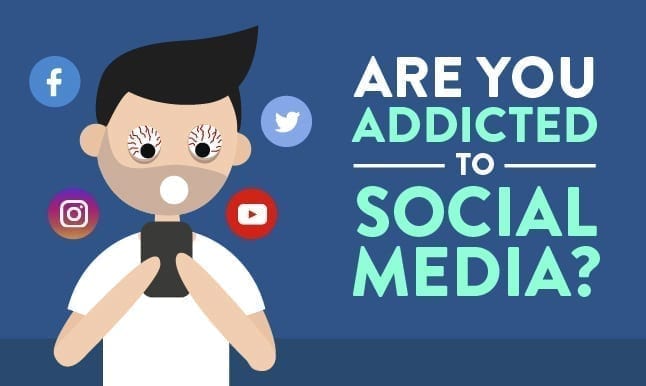 At the same time, it is important to understand that working with long-term neglected addictive relationships is most often a long and gradual process, since for a safe exit from addictive relationships, it is necessary, on the one hand, to rebuild and heal the client’s inner world, and on the other hand, to restore supportive ties with the world. external.
At the same time, it is important to understand that working with long-term neglected addictive relationships is most often a long and gradual process, since for a safe exit from addictive relationships, it is necessary, on the one hand, to rebuild and heal the client’s inner world, and on the other hand, to restore supportive ties with the world. external.
CONTROL AND INSURANCE ORGANIZATIONS
LEGAL INFORMATION
INDEPENDENT QUALITY ASSESSMENT OF MED. SERVICES
ANTI-CORRUPTION
PRICE LIST FOR PAID SERVICES
VACANCIES
Gambling addiction
Gambling addiction: causes, effects, ways out
Introduction
Dr. med. it is so important what the patient is addicted to: alcohol, heroin, nicotine or gambling, because they all have common properties:
- Over time, the object of dependence begins to be consumed by a person forcibly, even if there is no longer any pleasure associated with it
- Increasing degree of loss of self-control
- Dependency object used for escape from reality
- In the end, the addiction becomes so strong that the person ceases to pay attention to the negative consequences and damage to health
This article describes gambling addiction, how it occurs, how a person can recognize that they have become addicted to gambling, what can be done about it, and where to get help.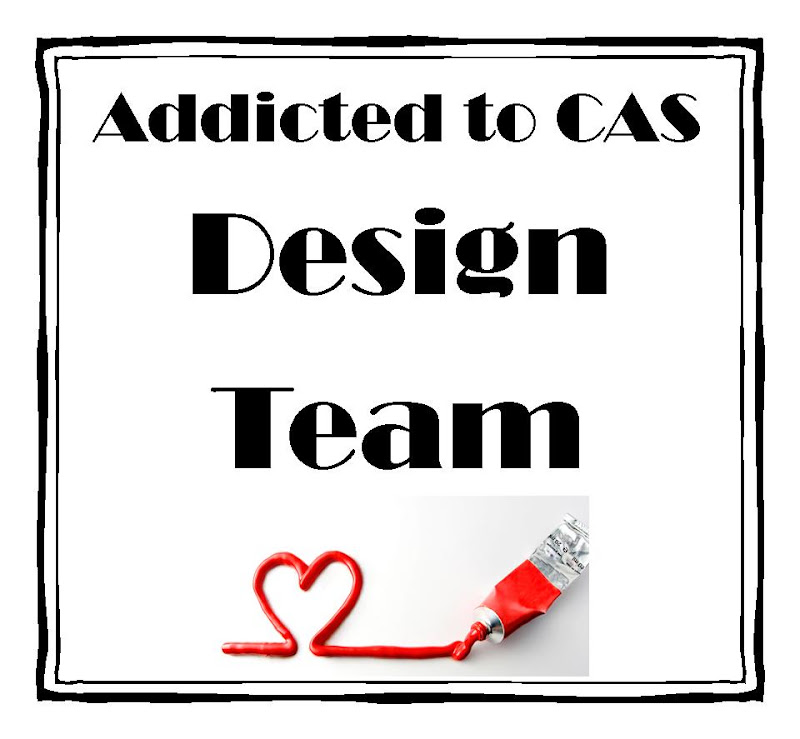
What is gambling addiction?
In ICD-10, the established international classification of diseases, gambling addiction is presented as a painful pathology in the section "Deviation in habits and disturbances in impulse control" and is defined as:
dominates the patient's lifestyle and leads to the loss of social, professional and material values and obligations.
At the same time, it is necessary to clearly separate the dependence on gambling and the presence of gambling addiction in patients of the manic type. Mania is a separate type of illness, accompanied by strong excitement, internal revival, unreasonably elevated mood and an indefatigable desire to play. It is also necessary to separate addiction to the game and gambling, accompanied by social dysfunction, which is expressed in ignoring social obligations and indifferent attitude to the feelings of other people. Such symptoms are most often found in prisoners in prison.
Gambling pathology is expressed in prolonged, repetitive and often also increasing craving for gambling, which damages the social life of a person and leads to such consequences as debts, the destruction of family ties and a decrease in interest in professional growth.
To speak of an established pathological craving for gambling, it is necessary to fix at least two moments during at least one year when the craving for gambling was pathological.
Another common classification of diseases, DSM-IV, additionally mentions signs of mental distortion typical for a gambler:
- Special importance of money for a gambler
- Striving to get ahead of the competition at all costs
- Constant excitement when gambling
- Increased need for social recognition
- Tendency towards increased diligence at work
- Frequent manifestation of psychosomatic diseases caused by stress.
How does gambling addiction develop?
Basic issues
Gambling addiction is a complex phenomenon in which many different factors play a role, but the most important are:
- Self-esteem disorders ("narcissism")
- Interpersonal disorders
- Dysregulation of intrinsic arousal state
Disorders in the field of self-esteem
Of particular importance is the violation of one's own evaluation, which is accompanied by a feeling of emptiness around oneself. Own, deeply rooted children's inferiority complexes are compensated by fantasies about their own greatness and omnipotence.
Own, deeply rooted children's inferiority complexes are compensated by fantasies about their own greatness and omnipotence.
Initial profits strengthen self-esteem, awareness of one's own importance, confirm a certain one's own exclusivity. Often at the beginning of the path there is a “big jackpot”, an easy and quick win, a starting impetus for leaving for your own fantasy world.
Interpersonal disorders
John Bowlby, a British child psychiatrist, developed attachment theory in the 1960s. He found that depending on the sensitivity of the mother and her ability to tune in to the child, various types of attachments arise.
In the "insecure-avoidant" type of attachment, for example, children are not sure that the person to whom they are attached is available to them. They have an expectation that their desires will be fundamentally rejected, such symptoms are usually present in children who have often been rejected in life. Children with this type of attachment are much more susceptible to various kinds of mental disorders compared to children with a "confident" type of attachment.
In addition, people who are obsessed with gambling are often found to have a "break from home" state, in particular a bad relationship with their father. Often in the history of the patient's illness, one can find an experience of deceived expectations and disappointments.
Dysregulation of one's own state of arousal
The inability to regulate one's own internal tension and arousal manifests itself, for example, in a special constantly present anxiety of a gambler. At first, the motivation for the game may be the desire to win and success, the desire to overcome boredom and monotony, or to overcome negative emotions, for example, after a divorce or breakup. Gradually, the player falls into a vicious circle, the victims of which are all spheres of the life of the individual.
The player gets excited during the game and tries to find excuses and logical explanations for his uncontrolled gameplay. The player may also develop superstitious and magical thinking. Gradually, he goes further and further into the world of his own fantasies of greatness and success. There is an alienation of a person from his usual social circle, he begins to sink deeper and deeper into loneliness. Along with this, the way of thinking gradually begins to change. The game becomes the main life occupation, which leads to physical, spiritual and social decline in the process of personality development.
Gradually, he goes further and further into the world of his own fantasies of greatness and success. There is an alienation of a person from his usual social circle, he begins to sink deeper and deeper into loneliness. Along with this, the way of thinking gradually begins to change. The game becomes the main life occupation, which leads to physical, spiritual and social decline in the process of personality development.
A gambler is also characterized by a reduced ability to control his own impulses, that is, he cannot fully resist the internal desire to play, just like a patient treated for alcohol addiction, after discharge from a drug treatment clinic, often cannot resist craving for a bottle, which can suddenly reappear. Despite the many negative consequences, the patient's desire to relieve tension through gambling increases.
This phenomenon has a definite neurobiological basis. The brain's reward system (mesolimbic system) is chronically overstimulated, leading to brain counter-regulation. The reward system of the brain becomes less and less resistant to harmful overstimulation. There is a neuroadaptation of the brain to such a state. And in order to experience the desired surge of emotions again and again, the player begins to increase the stakes in the game or the amount of time spent on gambling. The strongest surge of emotions that leads to an increase in human addiction is, of course, the moment of showdown, showdown.
The reward system of the brain becomes less and less resistant to harmful overstimulation. There is a neuroadaptation of the brain to such a state. And in order to experience the desired surge of emotions again and again, the player begins to increase the stakes in the game or the amount of time spent on gambling. The strongest surge of emotions that leads to an increase in human addiction is, of course, the moment of showdown, showdown.
Distorted thought patterns
Gamblers are characterized by the following delusions and erroneous ideas about their own state:
- Illusion of control
This is due to the fact that in gambling the personal factor plays a rather significant role as opposed to an objective and independent of the player case. Therefore, the player is inclined to explain the winnings by his own abilities, and write off the losses due to bad luck and third-party circumstances.
- "Monte Carlo effect" ("false withdrawal of the player")
From the results of previous events, a conclusion is drawn about the change in the probability of subsequent events. Example: “black” fell out three times in a row on a roulette table, accordingly, according to the player, the probability that red will fall out next time should now increase.
Example: “black” fell out three times in a row on a roulette table, accordingly, according to the player, the probability that red will fall out next time should now increase.
- Misconception about the probability of winning
The player significantly overestimates his chances of winning. For example, at 98% of the time the lotto game is losing.
- Close hit effect ("subliminal regret and slight miss")
This phenomenon occurs, for example, among slot machine players, when in order to win, 3 identical symbols must appear on the screen, and only two identical icons appear. Conclusion: “I was very close to winning! I have to try again!"
- Falling into a trap ("trap ")
In this case, we mean fixing a false decision in order to justify the investment already made in the bank. "Ok, I've probably already lost to a better hand, but since I've reached the turn, then I should look at the river card. "
It has been proven that while gambling, addicted people significantly increase the percentage of erroneous decisions.
Who is at risk?
Most at risk are male patients living alone, around 30 years of age. The roots of the development of dependence in them most often grow from the period of adolescence, while for women, on the contrary, the middle period of life is more dangerous. This area mostly includes people who are at risk of suicide attempts, who have a lot of debt and who have already committed illegal acts, such as stealing money for gambling. A fairly large proportion of people who are addicted to gambling, about a third, also suffer from other addictions associated with the use of alcohol or various drugs.
Gambling addiction develops to some degree in 2-3% of the population throughout life, and in about 1% of the population it takes the form of a serious illness. There is a certain relationship between the availability of gambling for the population (for example, the number of slot machines per 1000 people) and the frequency of diagnosing gambling addiction.
The turning point, the initial impetus can be the initial winning of the "big jackpot" or some difficult events in your personal life: problems with a partner, divorce, partner's pregnancy or professional failure.
There is also a high comorbidity (parallel diagnosis of other diseases) 50% of people addicted to gambling, there is also a lack of motivation, depressed mood, loss of vital interests.
25% of recorded patients made at least one suicide attempt. Particularly striking is the frequent disturbance in the field of personal perception, which is observed in more than 90% of gamblers. Violations in the field of personal perception are expressed in long-term, inappropriate behavior of a person, which originates in childhood and adolescence and leads to serious consequences in the field of the patient's social contact. Narcissistic manifestations are especially common in patients who typically have a grandiose sense of self-importance, despite the fact that they constantly overestimate the significance of their own talents and achievements. They are also characterized by a state of immersion in a fantasy of their own unlimited success, strength, brilliance, beauty or ideal love, while the patient believes that his personality is absolutely unique and inimitable, and constantly strives for increased attention from others.
They are also characterized by a state of immersion in a fantasy of their own unlimited success, strength, brilliance, beauty or ideal love, while the patient believes that his personality is absolutely unique and inimitable, and constantly strives for increased attention from others.
Such patients must be handled very delicately, as they completely reject any kind of therapy or contact with a doctor, as it goes against their idea of their own greatness.
Consequences of addiction to gambling
As a consequence, a typical addiction dynamics appears, which covers all spheres of life. In the end, there are very limited options for regulating the behavior of a person suffering from such addictions.
The dynamics of the development of addiction manifests itself in attempts to immediately win back what has been lost. In poker, this is called going on tilt.
This leads to progressive social isolation of a person. Feelings of guilt and shame appear, the fact of the game is hidden. A person is increasingly integrated into a certain environment of a gambler with an appropriate lifestyle, which relies primarily on the reduction of other needs. It can also lead to the commission of criminal acts in order to get money for the game.
A person is increasingly integrated into a certain environment of a gambler with an appropriate lifestyle, which relies primarily on the reduction of other needs. It can also lead to the commission of criminal acts in order to get money for the game.
Finally, this can lead to financial bankruptcy, loss of family support, and the threat of termination of a professional career. Staying in psychiatric hospitals after suicide attempts can lead to the criminalization of a person.
The physical consequences of constant restless play can manifest themselves in various psychosomatic symptoms, up to stomach ulcers, headaches and heart attacks.
6. How do I know if I am addicted?
There are many different questionnaires and tests to identify whether a person has an addiction to gambling, as well as to separate the pathological craving for gambling from other forms of gambling, such as social gambling, professional gambling, gambling accompanied by manic behavior, constant sitting at the computer ( gambling, chatting).
SOGS (South Oaks Gamblings Screen), an assessment of propensity to gamble, has found worldwide distribution and application. However, there are various other methods for detecting such pathologies. Ultimately, all of these studies test a person's ability to control their urge to gamble and stop gambling when clear negative consequences (such as exhaustion) appear, revealing the presence of narcissism already mentioned in previous chapters. They are also intended to indicate to the player that there are obvious debt problems and the threat that comes with this, since the person is already internally ready to commit criminal acts to solve financial issues.
Self Test
For a simple self test, we suggest taking the following test to find out if you are a gambling addict or not. Below is a list of 19 questions that must be answered either yes or no. If the number of positive answers exceeded 7, then there is a suspicion that you have a gambling addiction.
1. Have you ever played until you ran out of money?
Have you ever played until you ran out of money?
2. Have you ever borrowed money to gamble?
3. Have you ever borrowed money to play or because you had to pay back?
4. Do you regularly exceed your self-imposed time or financial limit for gambling?
5. Have you ever thought of getting money to play illegally?
6. Do you often think about the game?
7. Have you ever stolen money to play?
8. Do you have a hard time concentrating on things not related to gambling?
9. Do you become restless and aggressive when you are unable to gamble?
10. Do you find everyday life uninteresting and boring compared to gambling?
11. Does this weaken your interest in what is happening around you and in the people around you?
12. Do you play to win back what you lost?
13. Do you hide from friends or family how often you play and how much you have already lost?
14. Do you often feel pangs of conscience after a game?
15.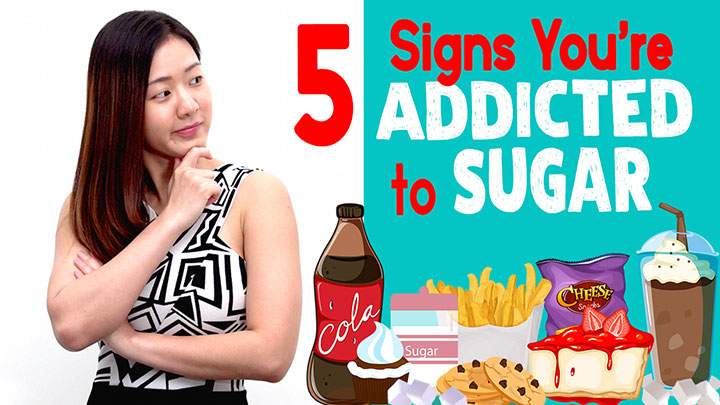 Has it ever happened that you continued to play, knowing that it harms you personally or someone else?
Has it ever happened that you continued to play, knowing that it harms you personally or someone else?
16. Have you ever played in order to improve your mood and get away from accumulated problems?
17. Did your game lead to conflicts and quarrels in your family?
18. Have you ever missed work/school in order to spend time gambling?
19. Have you ever had suicidal thoughts or attempted suicide because of gambling?
First you need to find out whether it is really a gambling addiction, which has already reached the stage of illness. To do this, you should contact a specialized consultation.
You then have to choose between outpatient or inpatient treatment. If the patient is still fairly well socially integrated and his illness has not yet advanced too far, regular visits to specialized counseling or outpatient psychotherapy sessions with a psychotherapist who specializes in such problems are quite sufficient.
In case of a more severe and advanced picture of the disease, when inpatient monitoring of the patient is prescribed, it is necessary to decide which clinic to choose, a psychosomatic specialized clinic or a drug treatment center. If the psychosocial consequences are still reversible or the aggravation of gambling addiction occurred against the background of acute stressful situations (divorce, dismissal from work), then you should contact a specialized psychosomatic clinic.
If the psychosocial consequences are still reversible or the aggravation of gambling addiction occurred against the background of acute stressful situations (divorce, dismissal from work), then you should contact a specialized psychosomatic clinic.
In case of progressive addiction development, it is necessary to visit a specialized clinic. If in addition there is a “material” attachment, alcoholism or drug addiction, then it is first necessary to eradicate one of the addictions in a psychiatric clinic.
As part of therapy, there is usually an agreement to completely stop gambling. Simply reducing the volume of the game to a moderate state is usually not enough. First of all, a complete cessation of gambling helps to identify the root cause that caused the appearance of gambling addiction. There are various methods of therapy focused both on deep penetration into the psychology of the patient and on the behavioral analysis of his condition.
In any case, in order to develop a therapeutic program, it is very important to determine exactly the role that gambling has for the patient, discuss the reasons for the change in thinking, and, together with the patient, develop a program to prevent this situation from recurring.